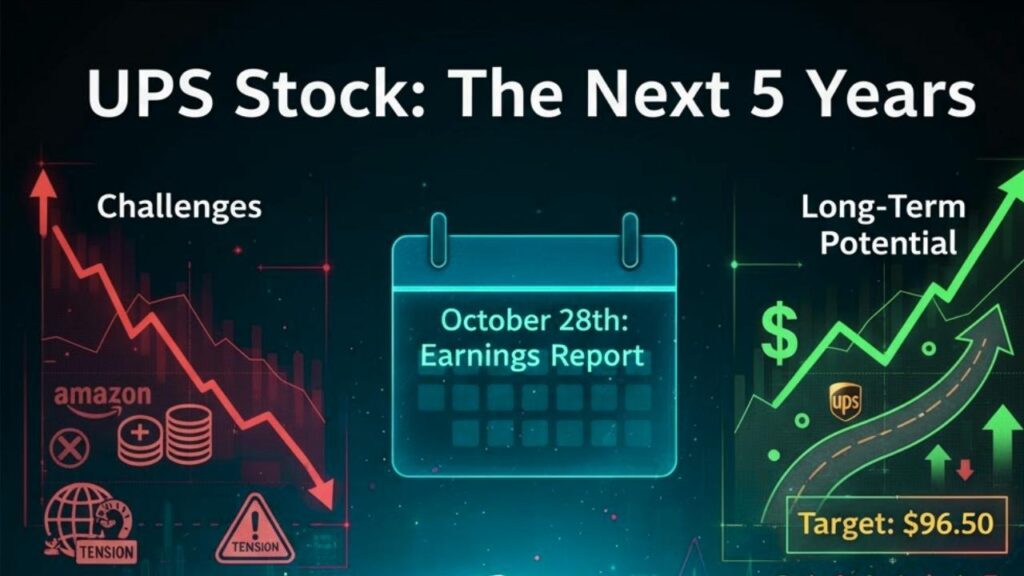As an investor navigating the ever-evolving landscape of the stock market, you understand the importance of strategic foresight. With the year 2025 on the horizon, United Parcel Service (UPS) presents a compelling opportunity worth your attention. This article aims to provide a comprehensive analysis of the potential trajectory of UPS stock, shedding light on key factors that may influence its performance.
By examining market trends, competitive positioning, and economic indicators, you will gain valuable insights to make informed investment decisions regarding UPS, a stalwart in the logistics and delivery industry. Prepare to delve into the nuances of what lies ahead for UPS investors.
Is UPS a Buy, Hold, or Sell for 2025?
For investors considering whether UPS stock is a buy, hold, or sell for 2025, the current financial landscape presents a nuanced picture. With UPS stock down 33% year-to-date, the company is undergoing strategic changes to prioritize higher-margin services over low-margin ones like Amazon deliveries. Although UPS’s earnings report forecasts challenges with Q3 revenues expected to decline, the strategic pivot shows long-term potential. Investors should weigh UPS’s undervalued position against global uncertainties before deciding. Waiting for the upcoming earnings report may provide clearer insights.
Why Has UPS Stock Fallen So Much Recently?
Economic Headwinds Impacting Performance
UPS stock has faced a sharp decline due to a confluence of factors. The post-pandemic era has seen a global freight recession, with a significant drop in package shipping volumes. This is compounded by inflation-driven cost pressures and heightened competition from FedEx and Amazon Logistics. Labor negotiations, resulting in wage hikes, have further strained UPS’s cost structure. This economic turbulence has unsettled investors, reflecting broader uncertainties that challenge the company’s growth prospects and have impacted the UPS earnings report negatively, contributing to the decline in UPS stock price.
Strategic Shifts and Trade Dynamics
Strategically, UPS’s decision to reduce its shipping volumes for Amazon, one of its major customers, has led to a substantial loss of revenue, albeit with potential long-term gains due to improved margins. Furthermore, evolving trade dynamics, including restrictions and tariffs affecting the U.S.-China shipping lane, have disrupted some of UPS’s most profitable shipments. This decision, coupled with a decreased demand from uneven U.S. economic growth, has led to lower operating margins. Despite this, UPS is making investments in AI and automation to mitigate these challenges.
Analyzing UPS Earnings Reports and Their Impact on Stock Price
Impact of Strong Earnings
The UPS earnings reports are crucial for investors seeking insights into the company’s financial health. The positive Q3 2025 earnings report, marked by a revenue of $21.4 billion and exceeding profit expectations, notably drove a substantial upswing in the UPS stock price, reflecting strong investor confidence.
Strategic Changes and Stock Fluctuations
Significant strategic shifts, such as reducing UPS layoffs and cost-cutting measures, have empowered the company to enhance efficiency. These moves bolstered investor sentiment, driving stock price increases. However, while UPS earnings highlight economic resilience, investors must stay vigilant regarding potential headwinds and market dynamics that could influence future valuations.
What Will UPS Stock Be Worth in 5 Years?

Evaluating Current Challenges
UPS stock faces multiple hurdles as it navigates a shifting market landscape. Trade tensions and tariffs continue to challenge UPS, especially with lower delivery volumes from Amazon, impacting its revenue streams and profitability projections. These issues are compounded by increased personnel costs, as fewer employees have exited than expected, leading to strained profit margins. The UPS earnings report due on October 28th might offer further insight into its future performance, yet the unpredictable macroeconomic backdrop suggests cautious market behavior.
Long-Term Potential and Strategic Moves
Despite these challenges, UPS’s strategic shift to its own last-mile service, UPS Ground Saver, could boost future earnings. Reducing dependence on Amazon deliveries and focusing on cost-efficient operations may enhance UPS stock price stability and appeal to investors. Analysts currently issue mixed ratings for UPS stock, with a median price target of $96.5, suggesting diverse expectations for the stock’s future value. These long-term strategies might result in varied prospects for UPS stock investors.
Dividends for United Parcel Service Inc. (UPS): What Investors Should Know
United Parcel Service Inc. (UPS) boasts a compelling dividend profile, offering a lucrative yield of approximately 7.5%. Historically, UPS has maintained a streak of consistent dividend payments, with recent payouts standing at $1.64 per share quarterly through 2025. However, caution is warranted. Despite its appeal, this high yield might be unsustainable as funding comes from increased debt levels. Investors are advised to remain vigilant, as the UPS earnings reports indicate potential for adjustments amidst its turnaround strategy aimed at enhancing operational efficiency.
Does Bill Gates Own UPS Stock?
Yes, Bill Gates owns UPS stock through the Bill and Melinda Gates Foundation Trust. As of the latest data, he holds 755,089 shares, a stake valued at approximately $118.7 million, indicating his strategic interest in this blue-chip company. Although UPS stock has experienced a 16.5% decline over the past year due to competitive pressures and lower shipping volumes, Gates’ long-term, conservative investment approach reflects his confidence in the potential recovery and growth of UPS stock.
How Can I Buy United Parcel Service Inc. Stocks?
Opening a Brokerage Account
To invest in UPS stock, start by opening an account with a reputable brokerage. Platforms like eToro offer a user-friendly interface and the ability to purchase shares directly. You can initiate the process by signing up and depositing funds into your account.
Purchasing UPS Shares
Once your account is set up, search for UPS stock, denoted by the ticker symbol UPS. Decide how many shares, or fractional shares if applicable, you wish to purchase. This flexibility lets you invest in UPS stock without committing to buying whole shares outright.
Conclusion
In considering UPS stock as you look toward 2025, you are positioned at an intersection of opportunity and caution. Navigating the evolving landscape of e-commerce, technological advancements, and global economic shifts requires diligence and strategic foresight. As an investor, you must weigh UPS’s robust logistics infrastructure against the industry’s inherent volatility and competitive pressures.
By staying informed and agile, you can capitalize on potential gains while mitigating risks. Ultimately, your investment decisions should align with your financial goals, risk tolerance, and market insights, ensuring that you are prepared to make informed choices as UPS continues to evolve and adapt.










